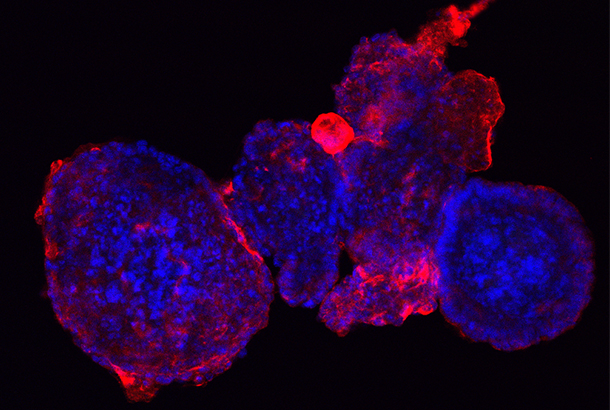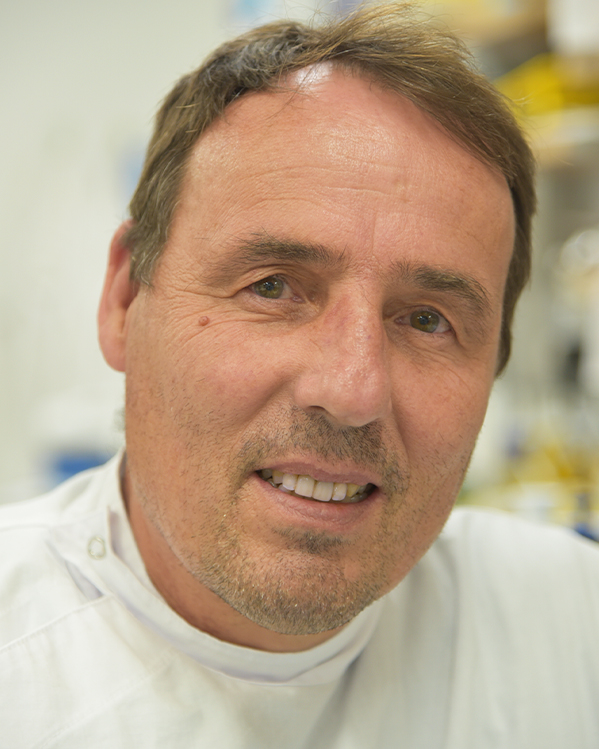Wounds that heal without leaving a scar, and research to prevent developmental impairments in children are two crucial Australian Institute for Bioengineering and Nanotechnology (AIBN) projects that have been backed under the latest Ideas Grants funding round. Stay on top of our industry news and developments, events and opportunities, by joining The NetworkJoin The Network

The National Health and Medical Research Council (NHMRC) awarded a combined $2.4 million under its 2022 Ideas Grant scheme to accelerate the work being done at the AIBN by Professor Alan Rowan and Professor Ernst Wolvetang.
The funding wins were among 31 new NHMRC grants awarded to researchers from across The University of Queensland (UQ), totalling $31 million.
UQ researchers received 26 awards from the NHMRC Ideas Grant scheme, four grants from the International Collaborations scheme, and one award from the Development Grants scheme.
Using miniature brain models to prevent developmental impairments
Professor Wolvetang is renowned for his work in organoids, tiny, three-dimensional avatars that are grown to resemble real human organs.
He was awarded a $1.36 million Ideas Grant over three years to use a special brain organoid to study birth asphyxia, and test treatments that could help affected infants avoid disability later in life.
Birth asphyxia – or hypoxic-ischemic encephalopathy (HIE) – happens when a baby suffers a prolonged lack of oxygen leading up to, or during a birth, occurring at a rate of four in 1000 newborns.

Strikingly, up to 60 per cent of these HIE affected infants die or have severe disabilities by the age of two, and intellectual or developmental disabilities as they age.
“The current treatment options for HIE remain limited and often don’t prevent long-term impairments, which highlighted to me, the need for improved early HIE diagnostics and better therapeutics,” Professor Wolvetang said.
The special organoid developed by Professor Wolvetang and his team mimics a prenatal brain suffering from acute hypoxic stress impacts.
He says studying this organoid and the various stages of HIE will help medical experts tailor treatments for affected children.
“This is a shift in our current understanding of the acute and long-term impacts of HIE,” Professor Wolvetang said.
“Through this work, we are fostering the development and testing of new individual therapies which when applied at scale, could have a huge global health and economic impacts.”
In-utero babies could hold the key to scarless wounds
Meanwhile, Professor Rowan and his team will use the $994,637 Ideas Grant over three years to explore how the healing properties of in-utero babies could lead to technology that promotes scarless wound healing.
Scientists have long been fascinated with foetal wounds and the ability of unborn babies to heal in a regenerative manner without leaving a scar, though the exact mechanisms of this process remain unknown.
Professor Rowan hypothesises that the answers may lay in fibrin – a protein involved in the clotting of blood – and an associated network that looks different in unborn children than it does in adults.
“Learning the secrets of the in-utero fibrin clot – the ability of babies to heal without leaving a scar - would be revolutionary for wound care,” Professor Rowan said.
“The ability to heal without fibrosis would significantly alleviate suffering of those who have been injured or burned, and would reduce the burden on the health system.”
Using a 3D fibrin model system, Professor Rowan and his team will replicate the ideal fibrin properties found in gestational foetuses and investigate the cells that underpin scarring.
The end goal is to be able to engineer and deliver smart biomaterials – materials that respond to specific cellular signals – that can promote timely and scarless wound healing.
“More than being interesting research, this is a scientific idea that we can take from the lab to the clinic to create tangible treatment options for patients,” Professor Rowan said.



